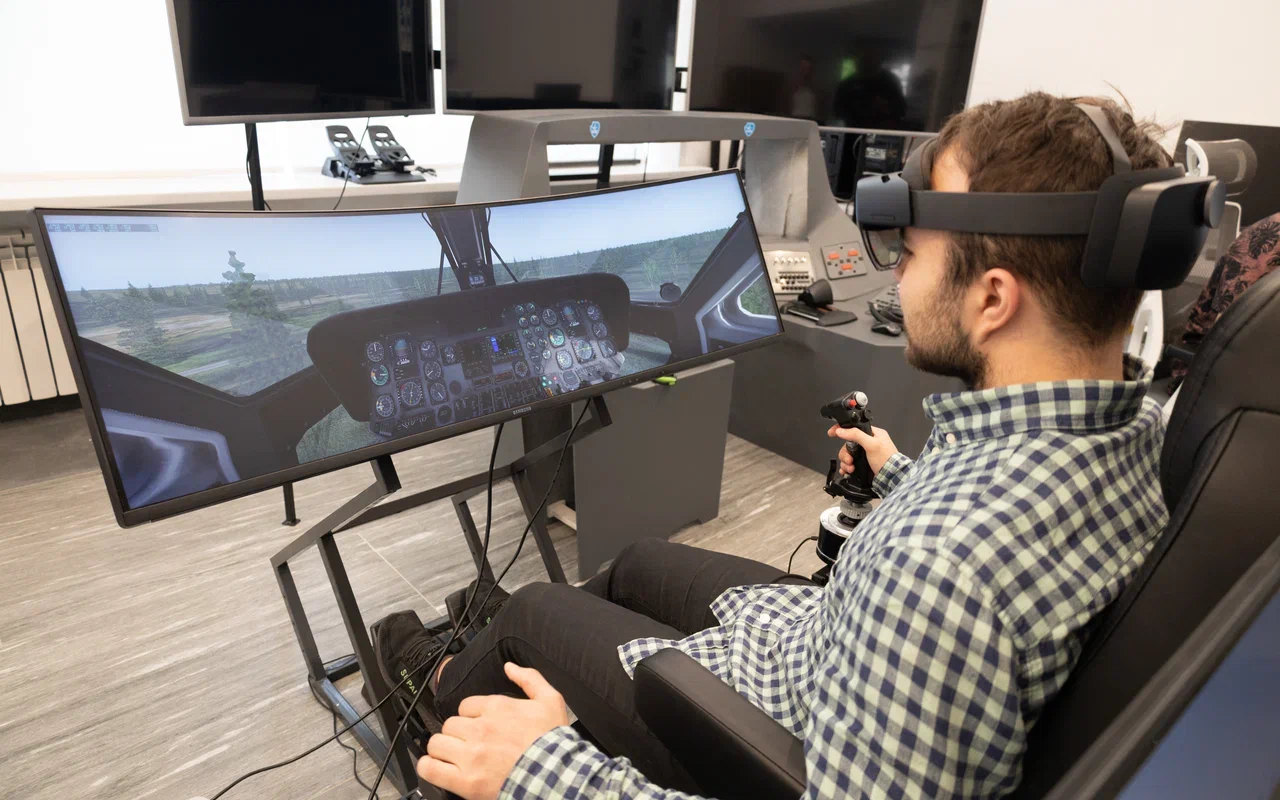MAI has developed the stand for the formation of requirements for a helmet-mounted target designation and indication system

At HeliRussia-2022, the MAI Avionics Center will demonstrate for the first time a stand for developing requirements for new target designation and indication systems (NSCI). NSCI is a necessary element of equipment for modern pilots on special purpose aircraft and rotorcraft. It is designed to save the pilot from having to monitor the cockpit instruments by projecting an image onto a transparent screen in front of his eyes and is mounted on his helmet. Since the screen is transparent, the pilot can simultaneously observe both the external situation and the displayed information.
The development of MAI employees, firstly, will help to avoid mistakes at the design stage of expensive helmet systems. There are precedents, when the final result was not accepted by the customer, since the requirements set did not provide operation convenience.
Secondly, it will help solve the problems of indication development. The process of indication development is often iterative, as there is a step-by-step coordination of requirements and the possibilities between the technical (aircraft and avionics) and biological (pilot) link of the aviation complex. To create indication relatively quickly, efficiently and with minimal costs, it is necessary to have a convenient tool – the open platform and development tools.
Another separate important requirement to the MAI system of requirements formation is its customizability, that is, the possibility of making changes to the software, hardware or structural part of the system, without violating its basic functionality and adding new properties.
“At the exhibition, we will present a tool that allows us to define and clarify the technical and ergonomic requirements for the helmet-mounted target designation and indication systems being developed. The demonstration stand uses industrial augmented reality glasses (AR headset), flight simulation software environment and tools for creating display patterns. As part of the simulation environment, mathematical models of avionics are created (cameras placed on the fuselage, a video image integration unit, a helmet positioning system in space), an information protocol is formed, which is transmitted to the AR headset. Due to the fact that all the tools are available for customization, it becomes possible to gradually form and justify technical requirements for future NSCI, avionics systems, ergonomics and logic of the information and control field," says Gleb Boyarsky, project manager.